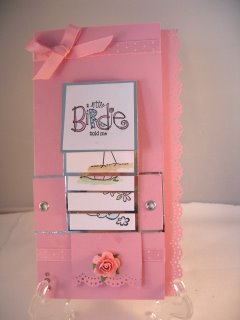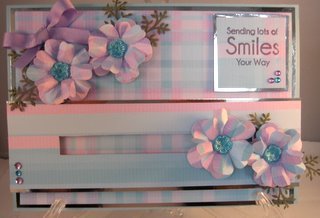My original plan for my pop-up book was to sew it. I misunderstood the original concept, and thought it only needed to be an interactive book. I wanted to use things like fringe, zippers, etc. combined with sewing techniques (eg. pleating). However, I found out that this didn't meet the project parameters, so I scuttled it. I thought I might still be able to use fabric, but this would likely more than double the amount of work I'd need to do, and I didn't have that much time to devote to the project. I would still like to create this sort of book at another time, though.
So I started investigating a variety of kirigami/origami papercraft techniques. I soon realized that beyond the absolute simplest techniques, I have no natural facility with paper-folding.
After a lot of struggling, I was able to make a kirigami paper sculpture, but I couldn't get it to close again.

I tried making an origami pop-up book, but that didn't go so well. Here are my failed attempts.


I attempted to create a foldout collection of flowers. The tutorial videos I watched made it look relatively simple. The tutorials were a lie! Everything kept exploding, and no fixative seemed powerful enough to maintain structural integrity.

I will attempt paper-folding techniques again when I am not so pressed for time.
Lest I enter a kirigami rage of epic proportions, I instead chose to work with a variety of construction techniques. With my background in sewing and metal arts, construction techniques are more aligned with my skillset. I chose to use illustration board instead of paper since paper isn't sturdy enough to support some of the mechanisms I'd be making.
The first page is a case in point. It uses a penny slider as a mechanism and demonstrates the design principle of contrast. It shows a contrast of colours, texture, and movement versus stillness.
In order to create the penny slider, I used old arcade tokens and a button (got some sewing notions in there, even if only invisibly!) and affixed them together with rubber cement.

The decorative element of studded wood was cut from a magazine photo and mounted onto thick paper. I used mayfair paper for the black, and left the reverse side of the illustration board alone for its tan colour. The white side of illustration board was used to form the frame for the penny slider.

Here it is, in motion:

The next page uses a simple pop-up concept with paper fold-outs in the shape of three hearts. These are hidden within an even simpler page fold-out. The symmetry of the composition demonstrates the principle of balance

A waterfall page demonstrates the principle of rhythm with a variation on the pull-tab technique. When you pull on the tab, the squares cascade in order. For these I used mayfair paper and repurposed paper from a magazine and a sheet of origami paper obtained at the Design Thinkers conference in Toronto, 2017.

The final page uses a simple fold-out kirigami technique, with right-angle pop-outs of different size demonstrating the effect of scale and proportion. For one of the pop-ups I used a photograph of the moon. For the other, I used a decorative ball. Both images came from recycled magazines/books. The overlay page is made of textured paper I purchased combined with cut-out paper recycled from a magazine. The pink and blue construction paper were purchased. This all rests atop pastel paper.
















